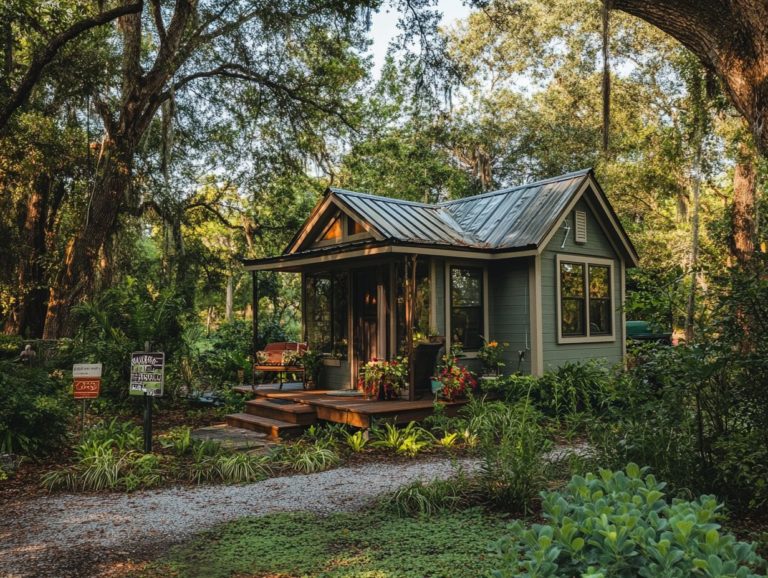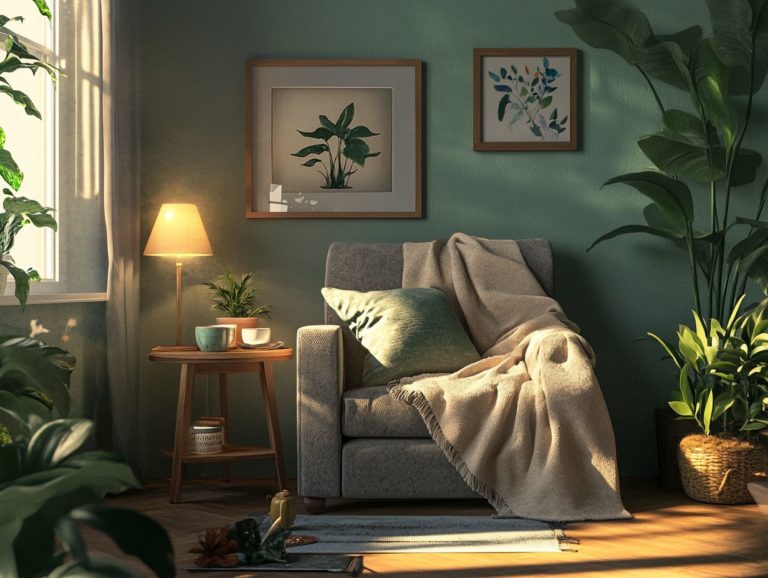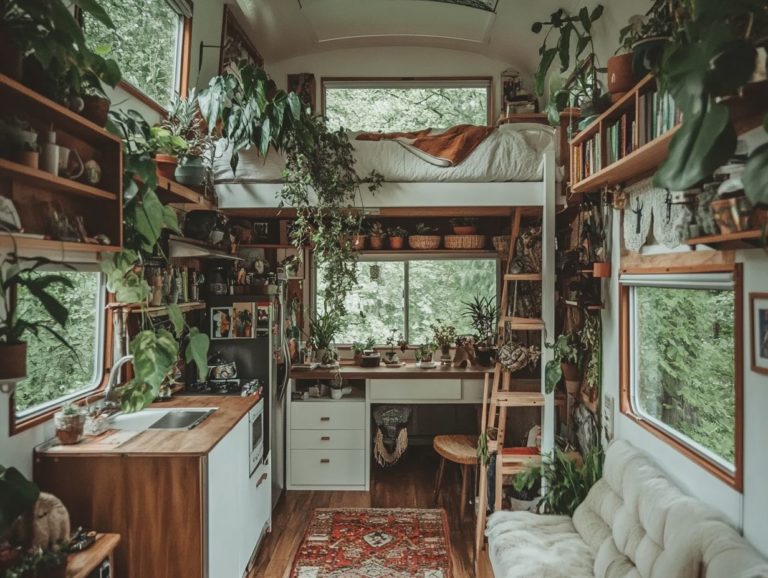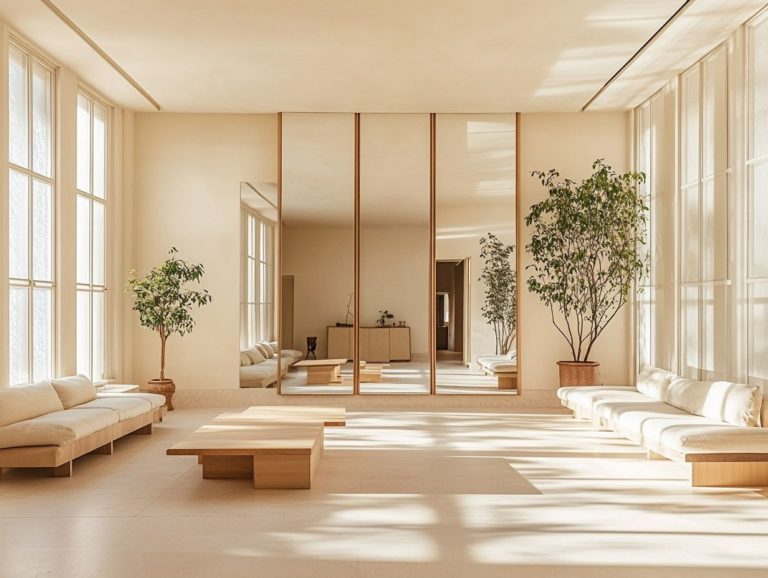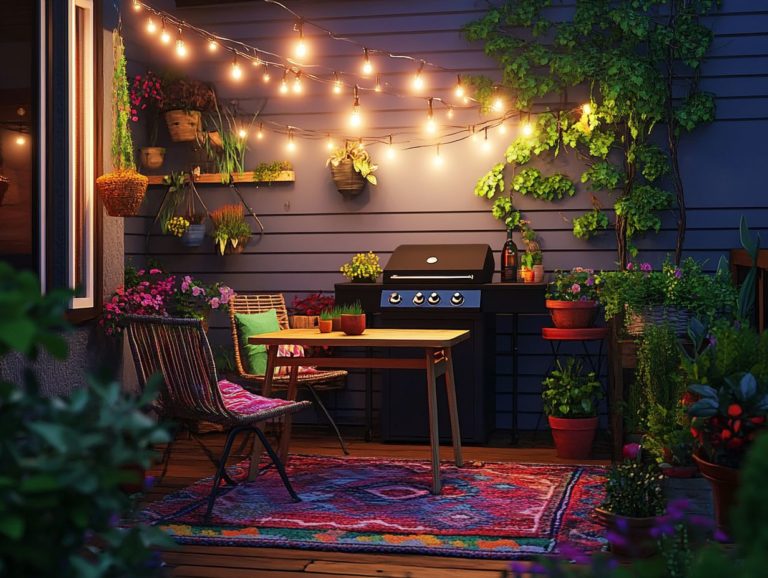The Power of Color in Tiny House Spaces
Color transcends mere aesthetics; it serves as a potent instrument in tiny house design, capable of transforming perceptions of space and elevating your living experience.
Choosing the right color scheme can make your compact home feel not only larger but also more welcoming.
This exploration delves into color psychology the study of how colors affect emotions and behavior offering practical tips tailored for various areas, alongside clever tricks to create optical illusions.
Discover how to blend functionality and beauty in your tiny house by mastering the art of color.
Contents [hide]
- Key Takeaways:
- The Impact of Color in Tiny House Design
- Choosing the Right Color Scheme
- Using Color to Create the Illusion of Space
- The Psychology of Color in Tiny House Living
- Incorporating Color in Different Areas of a Tiny House
- Tips for Using Color in a Functional and Aesthetic Way
- Frequently Asked Questions
- What is the power of color in tiny house spaces, including earth tones and soft pastels?
- How can color help maximize space in a tiny house?
- What are the best colors to use in a tiny house?
- Can dark colors be used in tiny house spaces?
- How can color affect the mood in a tiny house space?
- Are there any color combinations that work well in tiny house spaces?
Key Takeaways:
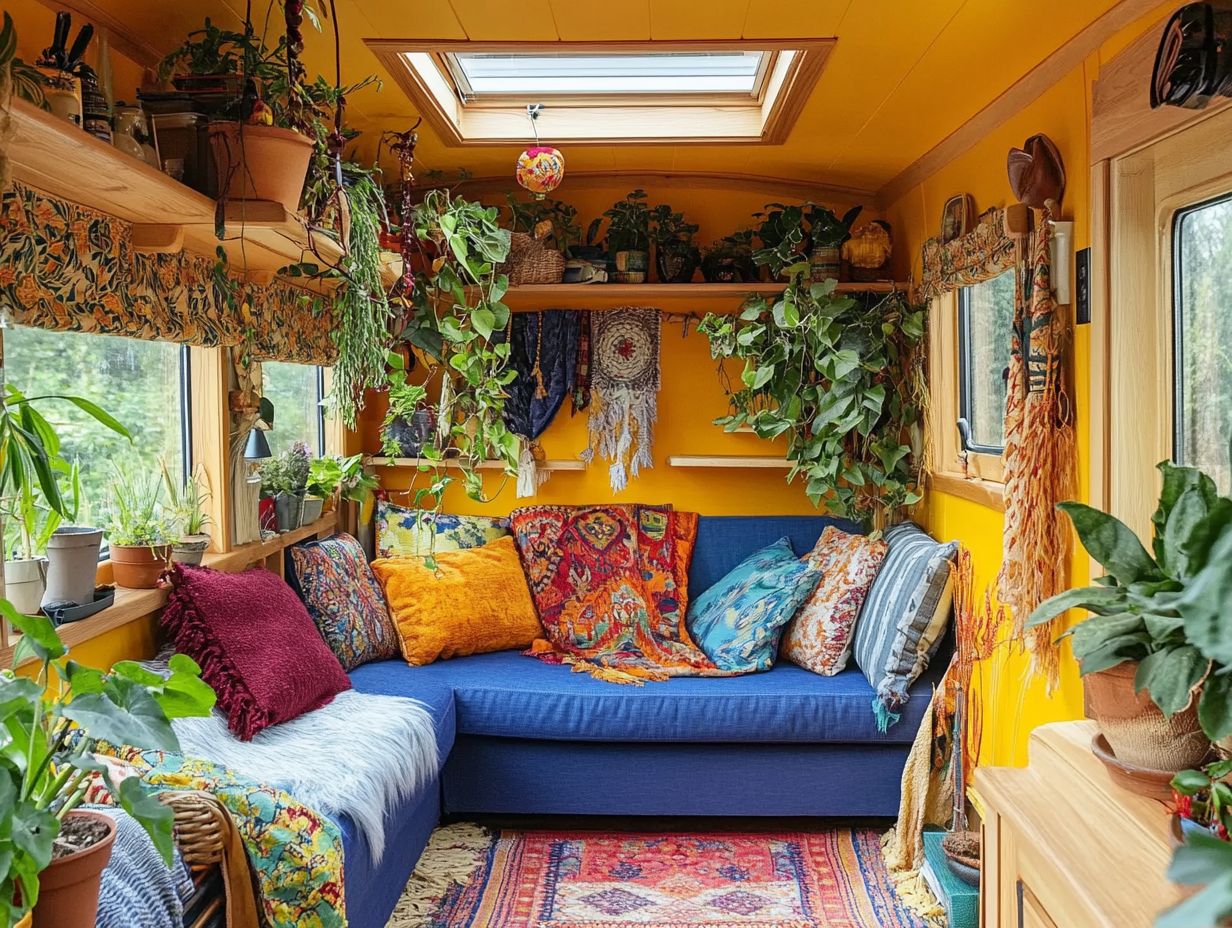
- Color has a powerful impact on the design of tiny house spaces, transforming them into functional and aesthetically pleasing homes.
- When choosing a color scheme for a tiny house, factors such as lighting, size, and personal preference should be considered.
- Strategically incorporating color in different areas of a tiny house can create the illusion of space and positively affect its inhabitants’ emotions.
The Impact of Color in Tiny House Design
The influence of color in tiny house design is transformative, shaping mood, perception, and the way you interact with limited square footage. In these compact spaces, choosing an effective color scheme can expand the sense of space while elevating the overall ambiance.
Understanding color psychology is essential, as you aim to blend light colors and dark hues to evoke specific feelings and experiences within your cozy environment.
Incorporate decorative elements wisely to enhance your space. By adding accent colors and maintaining a cohesive aesthetic, you can turn even the most confined areas into inviting, stylish retreats.
How Color Can Transform a Small Space
Color can profoundly transform small spaces, shifting your perception and creating visual intrigue. This ultimately makes tiny homes feel larger and more inviting.
In the realm of tiny homes, opt for light colors think soft whites, pale blues, and pastel hues to significantly enhance the sense of space. These hues reflect natural light beautifully, crafting an illusion of airiness that elevates any room.
Conversely, darker tones like navy or charcoal introduce a sense of depth, offering a cozy and intimate atmosphere that invites you in.
Don t miss the chance to make a statement with a bold accent wall! It can serve as a striking focal point that draws attention. Pair this with decorative frames in contrasting colors to further elevate the aesthetics, creating layers of interest that captivate the eye.
Striking the right balance between color and texture variety is essential; varied materials can help cultivate an engaging atmosphere, ensuring your home feels both spacious and welcoming.
Choosing the Right Color Scheme
Selecting the perfect color scheme for a tiny house is vital for crafting a harmonious living environment that mirrors your personal style and embraces contemporary decor trends. Remember, the right colors can transform your tiny home into a cozy haven!
Factors to Consider
When you re choosing a color scheme, consider how factors like lighting conditions, light fixtures, and the placement of decorative items can significantly impact the balance of colors and the perception of space, especially in tiny homes.
Natural light, with its ever-changing qualities, highlights the subtle tones in your chosen colors, making them feel vibrant and lively throughout the day.
On the flip side, artificial lighting often a mix of different hues and intensities can change how colors are perceived, sometimes dulling their vibrancy.
You can maximize these effects by strategically placing mirrors to reflect both natural and artificial light, creating an illusion of depth and brightness. Incorporating decorative items that align with your selected palette not only enhances the overall aesthetic but also visually expands small spaces, achieving a beautiful harmony between color and ambiance. Understanding the role of light in tiny house space design can further enhance these strategies.
Using Color to Create the Illusion of Space
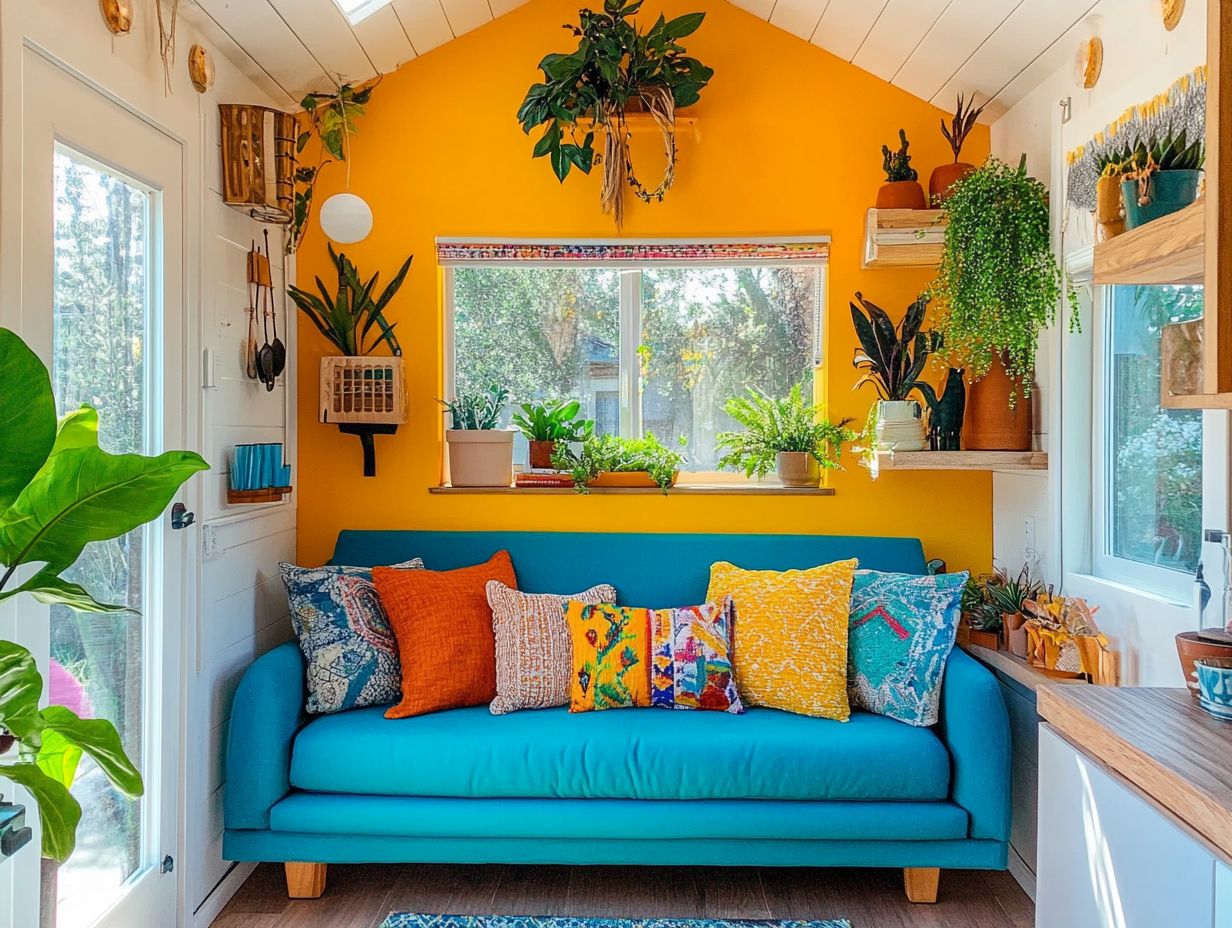
Utilizing color with purpose can craft visual tricks that elevate the perception of space in your tiny home. This thoughtful approach not only makes open floor areas feel more expansive but also minimizes visual clutter, which refers to too many items creating a chaotic look, transforming your living environment into a calm and spacious retreat.
Visual Tricks and Design Tips
Visual tricks and clever design tips serve as your allies in enhancing space perception in tiny houses. By employing elements like vertical lines and light colors, you can create a sense of visual interest and openness that truly transforms your space.
Incorporating vertical stripes on your walls or fabrics will effectively draw the eye upward. This makes your ceilings appear higher than they actually are.
Choosing light wood materials contributes to a bright, airy atmosphere, further expanding the perceived dimensions of your home.
Consider placing decor accessories, like mirrors, strategically across from windows. This not only reflects natural light but also creates a sense of depth that can make your space feel more expansive. Thoughtfully curated artwork and plants, arranged with intention, accentuate these features while adding a personal touch. This helps transform what might otherwise feel cramped into a welcome haven.
The Psychology of Color in Tiny House Living
The psychology of color plays a crucial role in shaping the emotional and mental experience of tiny house living. By understanding this influence, you can select calming hues that cultivate a calm atmosphere, transforming your small space into a tranquil sanctuary.
Emotional and Mental Effects of Color
Different colors can stir a range of emotional and mental responses. For instance, soothing shades like light blues and greens invite relaxation. Darker tones may bring about a sense of coziness or, conversely, a feeling of confinement.
People often respond to these colors in unique ways, shaped not just by their personal experiences but also by the decor surrounding them. To cultivate a harmonious ambiance in a compact space, consider blending light shades such as soft ivory or pale lavender with deeper hues like navy or charcoal gray.
This thoughtful combination can create a sense of balance, promoting tranquility while providing a cozy retreat.
For example, using light-colored furniture accented with dark pillows or striking artwork creates visual interest without feeling overwhelming. Incorporating decorative elements like textured rugs or lush potted plants can further enhance this balance, transforming the area into an inviting yet sophisticated haven.
Incorporating Color in Different Areas of a Tiny House
Incorporating color throughout various areas of your tiny house demands a deliberate strategy. Each space, whether it s the living room, kitchen, or bathroom, should resonate with a cohesive design that not only enhances the aesthetic but also maximizes the limited square footage you have.
Living Room, Bedroom, Kitchen, and Bathroom

In a tiny house, the living room becomes a versatile haven where you can embrace bold color schemes, using accent colors to spark visual interest. The bedrooms can benefit from softer pastels, creating a calming atmosphere that fosters relaxation.
For the kitchen, think about choosing crisp whites to evoke a sense of cleanliness and spaciousness. A few vibrant splashes in cabinetry or accessories can infuse your space with creativity, inspiring a zest for cooking.
In the bathrooms, shades of cool blues and greens can work wonders. They evoke serenity and enhance the flow of light, making the area feel refreshing and inviting.
Ultimately, the impact of these color choices goes beyond aesthetics. They weave together the harmony and functionality of your tiny house, ensuring each space feels cohesive while fulfilling its purpose perfectly. Understanding the role of color psychology in tiny house design can enhance this experience even further.
Tips for Using Color in a Functional and Aesthetic Way
To effectively incorporate color in both functional and aesthetic ways within tiny homes, you must embrace strategies that maximize your space while creating a cohesive look that elevates your overall home decor.
Maximizing Space and Creating Cohesion
Maximizing space and creating cohesion in tiny homes requires careful consideration. Use light and dark colors strategically to avoid visual clutter.
By selecting a color scheme that works well together, you can significantly influence how your space is perceived. For instance, pairing soft whites with touches of navy or deep green can establish a tranquil yet striking atmosphere. This combination, along with using color to make spaces feel larger, makes your rooms feel both open and inviting.
Employing consistent colors across adjoining areas fosters a sense of flow, which is essential in smaller living environments. Accessories like throw pillows, rugs, and artwork should echo your chosen hues. This ensures they enhance the overall aesthetic rather than compete with it.
Your goal is to create spaces that are visually appealing and feel cohesive throughout your home.
Frequently Asked Questions
What is the power of color in tiny house spaces, including earth tones and soft pastels?
The power of color in tiny house spaces lies in its ability to transform and enhance the overall look and feel of a small living area. Choosing the right colors can make a tiny house feel more spacious, cozy, and inviting.
How can color help maximize space in a tiny house?
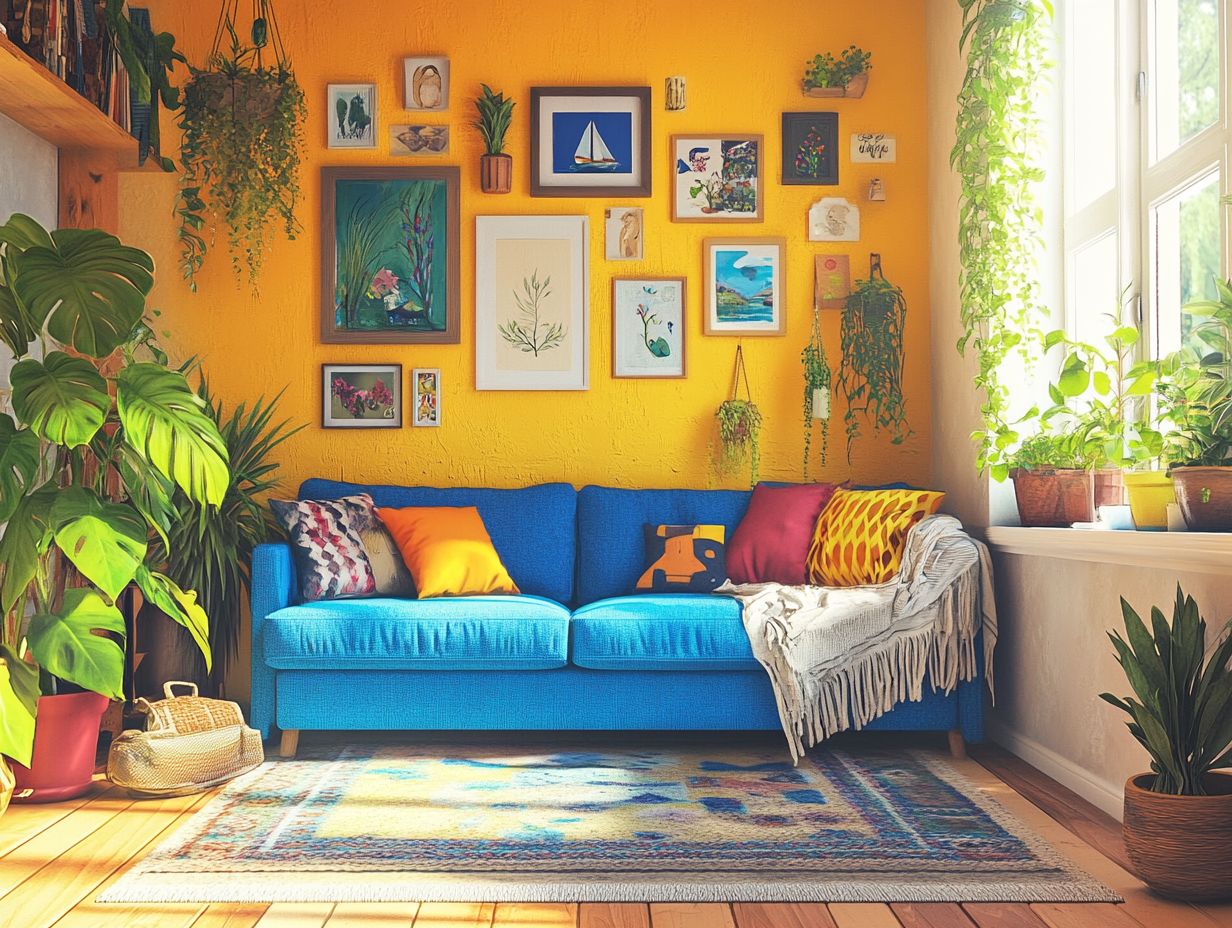
Want to make your tiny house feel larger? Lighter colors work wonders! Colors like white, cream, and pastel shades can create the illusion of more space.
What are the best colors to use in a tiny house?
The best colors for a tiny house are light and neutral tones. These colors reflect natural light and help the space feel more open. Soft blues, greens, and grays are also excellent choices for a calming and spacious feel.
Can dark colors be used in tiny house spaces?
Yes, dark colors can be used, but it’s important to apply them in moderation. Too much dark color can make a small space feel even smaller. Consider using dark accents, like a statement wall or furniture, to add depth and contrast.
How can color affect the mood in a tiny house space?
Color has a powerful impact on mood. Warm colors, like red and orange, create a cozy and intimate atmosphere. In contrast, cooler colors, such as blue and green, promote calm and relaxation.
Are there any color combinations that work well in tiny house spaces?
Yes, there are several color combinations that work well. Popular choices include white and light gray, pastel pink and cream, or different shades of blue. Experiment with combinations to see what works best for your tiny house.

